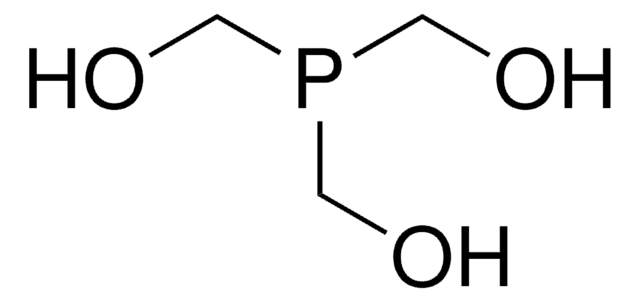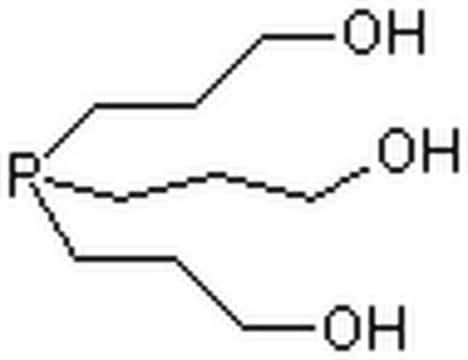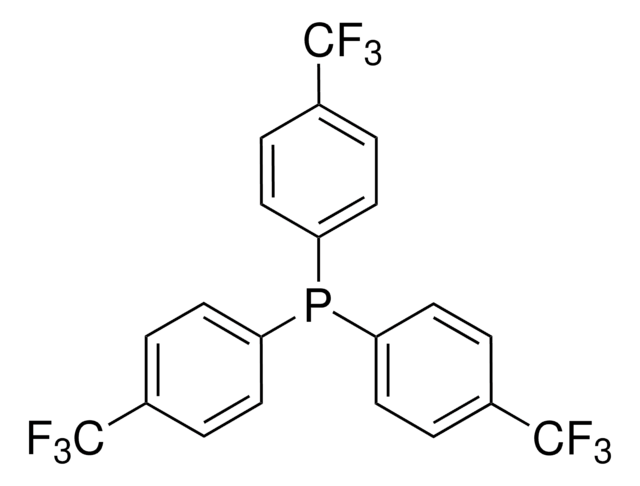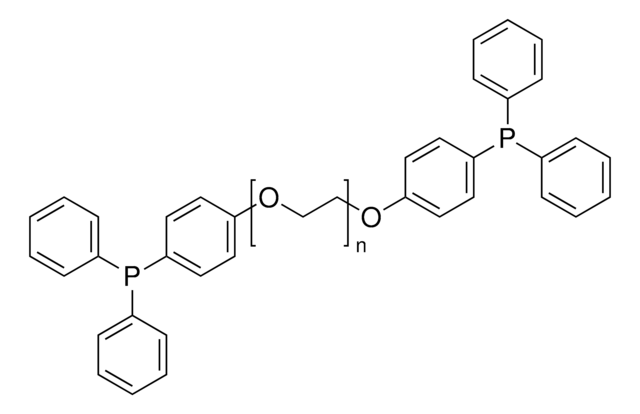777854
Tris(hydroxypropyl)phosphine
≥80%
Synonyme(s) :
THPP
Sélectionner une taille de conditionnement
61,40 $
Sélectionner une taille de conditionnement
About This Item
61,40 $
Produits recommandés
Niveau de qualité
Essai
≥80%
Forme
liquid
Pertinence de la réaction
reagent type: reductant
Densité
1.136 g/mL at 25 °C
Chaîne SMILES
OCCCP(CCCO)CCCO
InChI
1S/C9H21O3P/c10-4-1-7-13(8-2-5-11)9-3-6-12/h10-12H,1-9H2
Clé InChI
YICAEXQYKBMDNH-UHFFFAOYSA-N
Description générale
Mention d'avertissement
Danger
Mentions de danger
Classification des risques
Skin Corr. 1B
Code de la classe de stockage
8A - Combustible corrosive hazardous materials
Classe de danger pour l'eau (WGK)
WGK 3
Point d'éclair (°F)
Not applicable
Point d'éclair (°C)
Not applicable
Faites votre choix parmi les versions les plus récentes :
Déjà en possession de ce produit ?
Retrouvez la documentation relative aux produits que vous avez récemment achetés dans la Bibliothèque de documents.
Les clients ont également consulté
Active Filters
Notre équipe de scientifiques dispose d'une expérience dans tous les secteurs de la recherche, notamment en sciences de la vie, science des matériaux, synthèse chimique, chromatographie, analyse et dans de nombreux autres domaines..
Contacter notre Service technique




![1,3,5-Triaza-7-phosphatricyclo[3.3.1.13,7]decane 97%](/deepweb/assets/sigmaaldrich/product/structures/101/883/9fb92027-f8be-41b8-abd5-232e7cac2696/640/9fb92027-f8be-41b8-abd5-232e7cac2696.png)









